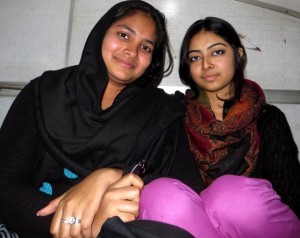
Two 19 year old students sit in an upper berth on a Bangladeshi train, thinking about tomorrow’s placement exam
The train from Rajshahi to Khulna, Bangladesh is jam packed with prospective students and their parents. The destination? Entrance Exam time at Khulna University. Khulna is far from the biggest university in Bangladesh, but it’s among the most desirable. “Khulna University is not political, which is why I want to go there,” one prospective student told us. “Other universities go on strike, and then there are session gaps, which mean it may take longer to get a degree. At Khulna, I can get it in four years.”
Your WoWasis correspondent shared a train cabin with a government tax official, his wife, daughter, and her girlfriend, and three other prospective students. They all shared the same enthusiasm about tomorrow’s exams, although the chance of them all succeeding is poor. Of 4,500 yearly applicants, only 350 are chosen, vetted by this once-yearly exam.
If selected, the tuition is affordable, 10,000 taka ($125 USD) per year. But other expenses do mount. Off-campus housing is 2,000 taka per month, food another 5,000, and general expenses another 3,000. That’s 10,000 taka per month, or $1,500 USD per year. Even for upper middle class Bangladeshi families, the expense can be a strain. This expense can be lowered by staying in a campus dormitory, which costs only 3,000-5,000 taka per month, but there is a two-year waiting list.
Bangladesh is an education-focused country, where even rural elementary school children learn English. Thousands of Bangladeshi teens take university exams every year, and each of the prospective students we talked to expressed a desire to graduate and continue building the country. But they also discussed the reality of leaving the country to accept employment in another country. According to the latest statistics from the United Nations Conference on trade and Development (UNCTAD), the top two corridors for skilled emigrants are Bangladesh-India (70,092 individuals per year) and Bangladesh-USA (41,920 per year). In fact, Bangladesh fills out 6 out of the top 14 slots, worldwide. The trend for Bangladeshis is on a growth curve: from 2002 to 2011, it increased 20%.
For the young people on their way to the placement exam, the road seems to be laid out. Succeed in the exam, graduate, accept employment in another country, and send remittance payments home. Perhaps their future model will be similar to India’s, where they return home eventually to build their own businesses. But that’s in the future. Tomorrow, it’s all about the exam.
Leave a Reply